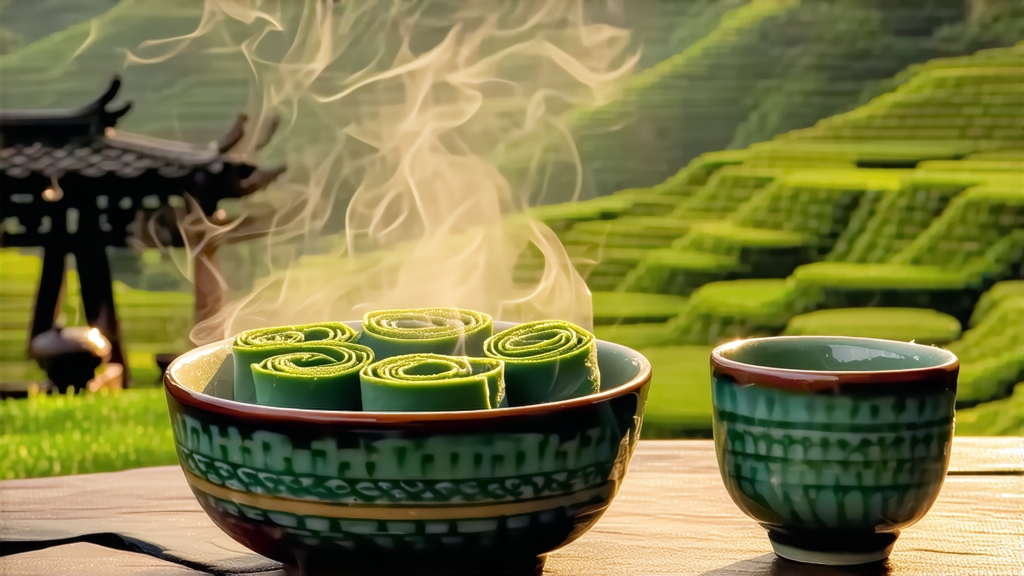
Alishan High-Mountain Oolong is not merely a tea; it is a liquid map of Taiwan’s central mountain range, a cultural narrative written in fog, volcanic soil and three centuries of craft. Rising between 1 000 and 1 400 metres where the Tropic of Cancer brushes the 23rd parallel, the Ali Mountain Range traps Pacific clouds that drift inland each afternoon. These clouds act as a natural shade-cloth, slowing photosynthesis and coaxing the tea bush to stockpile amino acids, floral terpenes and a signature creamy sweetness that cannot be replicated at lower elevations.
Historical roots
Oolong cultivars arrived in Taiwan during the early 1800s when Fujian immigrants carried Qingxin (Green Heart) cuttings across the strait. The Alishan forests, already sacred to the Tsou indigenous people, were first planted with tea in 1895 under Japanese agronomists who sought a high-altitude alternative to Darjeeling. After World War II the Kuomintang veterans refined the plucking standard to “one bud, two leaves, three fragrances” and created the modern Alishan style we recognise today: lightly oxidised, tightly rolled pearls that open like miniature green peonies in hot water.
Cultivar and terroir
While Qingxin remains the benchmark, micro-clones such as Jinxuan (milk aroma) and Cuiyu (jade oolong) are now cultivated on north-facing slopes where morning mist lingers longest. Granite-and-schist soils, rich in iron and magnesium, drain quickly yet retain cool moisture; diurnal swings of 15 °C force the plant to thicken cell walls, concentrating flavour. The result is a liquor that balances alpine greenness with tropical lily, a contrast often described as “orchid butter”.
Plucking calendar
The mountain calendar dictates four annual harvests. The spring pick, usually 5–20 May, is most coveted: buds awaken from winter dormancy packed with L-theanine, yielding a velvety texture and enduring orchid finish. Summer tea, picked after the Mei-Yu monsoon, carries brighter citric top notes but lighter body. Winter harvest, around late October, offers a mineral spine reminiscent of wet slate and is favoured by local tea artists for charcoal re-roasting.
Crafting the leaf
Within minutes of plucking, leaflets are spread on bamboo trays under high-ceilinged barns where mountain wind lowers leaf temperature to 18 °C. A gentle withering (wei diao) lasts 6–8 hours; the goal is moisture reduction without grassiness. Next comes yao qing—“rocking the green”—a rhythmic tumbling in cylindrical bamboo drums that bruises leaf edges while keeping the vein intact. This partial rupture initiates oxidation at 25 %, the sweet spot between green tea’s 0 % and traditional Dong Ding’s 40 %.
Kill-green (sha qing) employs an automated drum set to 260 °C for exactly 4 minutes, halting oxidation while locking in floral volatiles. Immediately the leaves are wrapped in cotton cloth and loaded into hydraulic rollers that apply 1 200 kg of pressure, shaping the leaf into the iconic半球形 (hemispherical) pellet. A succession of tighter rolls and low-temperature drying (80 °C) follows, reducing moisture to 3 % without baking the tender bud.
The finishing touch for premium lots is a low-charcoal bake over longan wood embers at 60 °C for 6–10 hours, repeated across three lunar cycles. This “soft bake” sublimates residual moisture, caramelises sugars and adds a whisper of smoked honey that frames rather than masks the natural florals.
Grading nomenclature
International buyers will encounter three grades. “Dayuling” refers to gardens above 2 000 m—rare, glacier-scented and auction-priced. “Alishan Zhulu” indicates 1 200–1 400 m, the quality sweet spot. “Alishan Shanzhen” is the accessible 1 000 m grade, still fragrant yet wallet-friendly. All genuine lots bear the Taiwan Tea Research & Extension Station hologram plus GPS coordinates of the plot.
Water philosophy
Alishan oolong is a diva that demands soft water with 30–50 ppm TDS; high calcium mutes florals, while distilled water renders the liquor hollow. Mountain spring water is traditional, but filtered low-mineral water works abroad. Pre-heat every vessel; heat shock is the fastest way to flatten high-note aromatics.
G